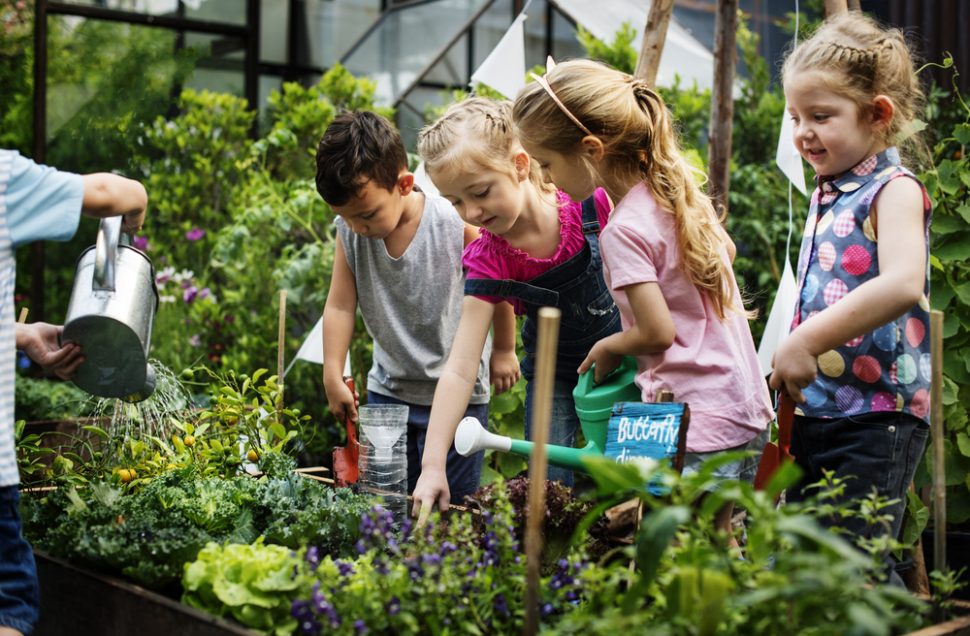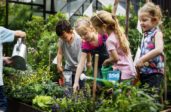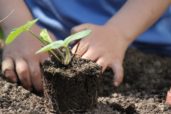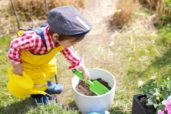Edible Gardens For Preschoolers – Simple science activities [4/4]

Let them actually dig and get their hands dirty, add seeds to examine and explore with, help them plant their own seeds, or add fresh smelling flowers. Feeling textures of different materials and plants is very stimulating for sensory development.
You can also talk about what types of plants are edible and even let them taste different things grown in the garden. Other ideas for a sensory bin include: Adding different leaves to explore and identify Adding mud, leaves, twigs, etc. for bird nest building Containers of water for washing fresh reduce Dirt with insects to bury/dig up Science in the garden can be as simple as exploring an old bird nest you find or broken eggshells, playing in mud and seeing what happens when mud sits out in the sun, or learning about garden helpers by exploring earthworms.
Other simple science activities include: Exploring the parts of an apple or cleaning out a pumpkin Comparing fresh and dried fruits, leaves, or flowers Using different pasta types to represent (along with discussing) the life cycle of a butterfly– watching one hatch if possible Observing different stages in a plant’s life cycle within the garden Arts and Crafts One thing all children love to do is arts and crafts, so this hands-on learning is definitely going to engage them. You can paint rocks to make them look like ladybugs or flowers, make papier-mâché watermelons, use Play-Doh to either construct your own items or add garden themed cookie cutters.
One neat project is to make 3D flowers. Use cupcake liners, coffee filters, and large paper doilies. Color or design them however you want and then layer them (doily on bottom, coffee filter middle, and cupcake liner on top) with glue. Also glue on a stem and add leaves. Spray just a dab of floral perfume or air freshener and you have a beautiful, 3D scented flower.
More art crafts to try are:
- Stuffed yarn leaves Leaf tracing Ink blot butterfly wings
- Using outdoor chalk to decorate garden areas (washes off when it rains)
- Plastic bottle bottoms to stamp flowers
- Paper lettuce using green circles of various sizes
- Garden Inspired Snacks
What kid doesn’t love a good snack? You can even relate gardening into snack time or let the kids get hands-on with garden-themed cooking activities.
Ideas to try:
- Taste honey (relate to activity on bees)
- Types of seeds you can eat Vegetable soup or fruit salad from the garden
- Taste parties to try various fruits, vegetables, or other edible plants that may be new to them
Picnic in the garden
Have “buggy snacks” with ants on a log/in the sand (raisins, celery, peanut butter, graham cracker), spiders (Oreos and pretzel sticks), butterflies (pretzel twists and celery or carrot sticks), and snails (celery, apple slices, pretzel pieces, chocolate chips, and peanut butter). Make snacks for the birds and other garden wildlife.
Just letting children get involved with watering plants or decorating their own pots can be enough to pique their interest in the gardening world. You can assist them with planting projects, there are several fun, kid-friendly planting projects out there.
To name a few:
- Plant seeds in sponges
- Plant seeds in ice cream cones
- Grow and observe what happens with popcorn kernels in baggies
- Grow in your name out of grass seed
- Plant a pretty flower or make a butterfly garden with wildflowers
- For St. Patrick’s Day, grow some shamrocks Grow a bean stalk
Encourage children to go on different types of “hunts” around the garden. You can go on an insect, color, clover/shamrock, flower, or leaf hunt. Count butterflies and bees and bring up pollination. The possibilities really are endless! Of course, another great way to help children learn about gardening and expand their knowledge of the topic is by reading garden related books to them regularly and assisting them with reading as they get older.


